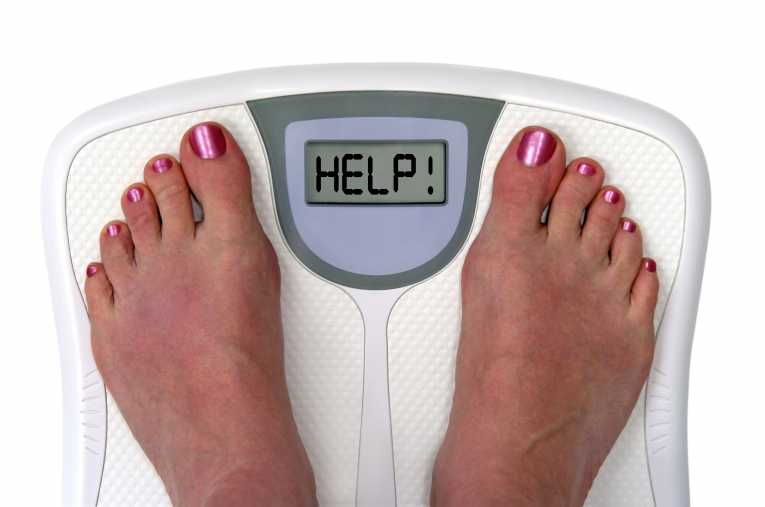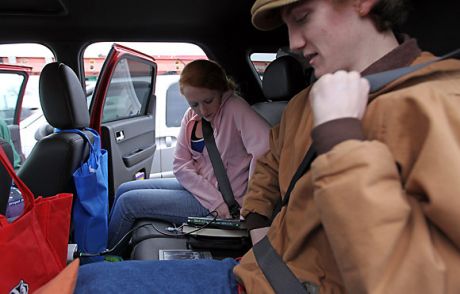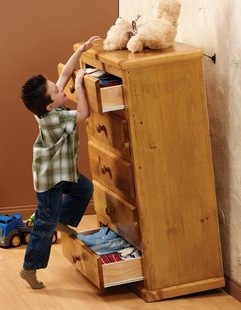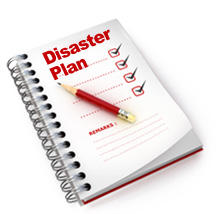Foreign object ingestion is a common reason for visiting an emergency department (ED), particularly for children (1–3). In recent years, internal injuries have been reported following unintentional ingestions of wire grill-cleaning brush bristles by both children and adults (4–6). A series of six cases from a single hospital system with two EDs during July 2009–November 2010 was reported previously (4). This report describes a series of six more cases identified at the same hospital system during March 2011–June 2012. The six patients ranged in age from 31 to 64 years; five were men. Like the patients in the previous series (4), all six reported outdoor residential food grilling and use of commercially available wire grill-cleaning brushes. The severity of injury ranged from puncture of the soft tissues of the neck, causing severe pain on swallowing, to perforation of the gastrointestinal tract requiring emergent surgery. Awareness of this potential injury among health-care professionals is critical to facilitate timely diagnosis and treatment. Additionally, awareness among the public, manufacturers who make wire grill-cleaning brushes, and retailers who sell these products can reduce exposures and decrease the likelihood of further occurrences. Before cooking, persons should examine the grill surface carefully for the presence of bristles that might have dislodged from the grill brush and could embed in cooked food. Alternative residential grill-cleaning methods or products might be considered.
Author: Randy
Older Workers To Outnumber Younger Employees For The First Time
 Whether out of economic need or simply a desire to continue working, many baby boomers aren’t leaving their jobs anytime soon.
Whether out of economic need or simply a desire to continue working, many baby boomers aren’t leaving their jobs anytime soon.
In fact, many workers 55 and older are staying in the workforce. By year’s end their numbers will surpass those who are aged 25 to 34. And the trend is expected to continue for the foreseeable future — until 2020.
via Older Workers To Outnumber Younger Employees For The First Time.
Healthy Aging Over 50
 Healthy aging is a hot topic for baby boomers everywhere. Whether you’re concerned about weight gain, sex drive or chronic diseases, the key to healthy aging is a healthy lifestyle. Eating a variety of healthy foods, practicing portion control and including physical activity in your daily routine can go a long way toward promoting healthy aging. Better yet, its never too late to make healthier lifestyle choices.
Healthy aging is a hot topic for baby boomers everywhere. Whether you’re concerned about weight gain, sex drive or chronic diseases, the key to healthy aging is a healthy lifestyle. Eating a variety of healthy foods, practicing portion control and including physical activity in your daily routine can go a long way toward promoting healthy aging. Better yet, its never too late to make healthier lifestyle choices.
Stop the Strain at Work
 Overexertion has long been among the leading causes of nonfatal workplace injuries, and attempts to combat it continue to be a burden on employers and their pocketbooks. An estimated 3.5 million overexertion injuries occur every year, most of which are from excessive lifting, lowering, pushing, pulling or carrying. Back injuries are the most common form of overexertion in the workplace and can result in huge costs. According to a 2010 report from the Boston-based Liberty Mutual Research Institute for Safety, in 2008, overexertion cost businesses $13.4 billion in direct workers’ compensation costs – accounting for more than 25 percent of the overall $53.4 billion national burden.
Overexertion has long been among the leading causes of nonfatal workplace injuries, and attempts to combat it continue to be a burden on employers and their pocketbooks. An estimated 3.5 million overexertion injuries occur every year, most of which are from excessive lifting, lowering, pushing, pulling or carrying. Back injuries are the most common form of overexertion in the workplace and can result in huge costs. According to a 2010 report from the Boston-based Liberty Mutual Research Institute for Safety, in 2008, overexertion cost businesses $13.4 billion in direct workers’ compensation costs – accounting for more than 25 percent of the overall $53.4 billion national burden.
via 6 11 Stop the Strain.
How can you lose weight and keep it off for good?
 How can you lose weight and keep it off for good? Successful dieters in the National Weight Control Registry, a group of 10,000 people who have lost 30 pounds or more and maintained that loss for a year or more, have developed many weight-control strategies. For instance, they:
How can you lose weight and keep it off for good? Successful dieters in the National Weight Control Registry, a group of 10,000 people who have lost 30 pounds or more and maintained that loss for a year or more, have developed many weight-control strategies. For instance, they:
- Follow a low-calorie, low-fat diet of about 1,800 calories a day.
- Keep track of food intake.
- Count calories, carbs or fat grams or use a commercial weight-loss program to track food intake.
- Walk about an hour a day or burn the same calories doing other physical activities.
- Eat breakfast regularly, often including whole grains and low-fat dairy products.
- Limit dining out to an average of three times a week, and fast food to less than once a week.
- Eat similar foods often and dont splurge much.
- Watch fewer than 10 hours of TV a week.
- Weigh themselves at least once a week.
via Obesity could affect 42% of Americans by 2030 – USATODAY.com.
Buckle Up – Even in the Back Seat
 Unbuckled occupants “become a back-seat bullet” in a crash, says Pam Fischer, state highway traffic safety director. In collisions, experts say, unbelted passengers in the back seat continue to move at the same rate of speed as the vehicle they’re in until they hit something — seat back, dashboard, windshield or people in the front seat. Yet many view the back seat as somehow safer.
Unbuckled occupants “become a back-seat bullet” in a crash, says Pam Fischer, state highway traffic safety director. In collisions, experts say, unbelted passengers in the back seat continue to move at the same rate of speed as the vehicle they’re in until they hit something — seat back, dashboard, windshield or people in the front seat. Yet many view the back seat as somehow safer.
via States expand seat belt laws to cover rear-seat riders – USATODAY.com.
The Hidden Costs of Accidents
 Accidents are more expensive than most people realize because of the hidden costs. Some costs are obvious — for example, Workers’ Compensation claims which cover medical costs and indemnity payments for an injured or ill worker. These are the direct costs of accidents.
Accidents are more expensive than most people realize because of the hidden costs. Some costs are obvious — for example, Workers’ Compensation claims which cover medical costs and indemnity payments for an injured or ill worker. These are the direct costs of accidents.
But what about the costs to train and compensate a replacement worker, repair damaged property, investigate the accident and implement corrective action, and to maintain insurance coverage? Even less apparent are the costs related to schedule delays, added administrative time, lower morale, increased absenteeism, and poorer customer relations. These are the indirect costs — costs that aren’t so obvious until we take a closer look.
Hidden Danger: Furniture Tip-Overs
 Top safety tips to help prevent tip-over hazards
Top safety tips to help prevent tip-over hazards
- If a piece of furniture is unstable or top-heavy, secure it to a stud in the wall using brackets, braces, anchors or wall straps. Large items such as TVs, microwaves, fish tanks, bookcases, heavy furniture and appliances can topple off stands and fall on children.
- If you have a newer, flat screen TV, make sure it’s properly anchored to the wall.
- Read the manufacturer’s instructions for tips or warnings regarding placement of your TV or furniture.
- Keep heavier items on lower shelves or in lower drawers.
- Don’t keep remote controls, candy, toys or other items that attract children on top of furniture, as your child might be enticed to reach for these items.
- Supervise young children at all times.
Campaign to Prevent Falls in Construction
![]() A national campaign to prevent construction-worker falls was launched recently. The campaign encourages everyone in the construction industry to work safely and use the right equipment to reduce falls. Special emphasis and activity will focus on residential construction contractors and workers.
A national campaign to prevent construction-worker falls was launched recently. The campaign encourages everyone in the construction industry to work safely and use the right equipment to reduce falls. Special emphasis and activity will focus on residential construction contractors and workers.
FACT – FALLS KILL!
Falls are the number one cause of construction-worker fatalities, accounting for one-third of on-the-job injury deaths in the industry.
To turn this problem around, we need to promote the use of fall prevention practices by contractors and construction workers.
via CDC – Directory of NIOSH Construction Resources – Campaign to Prevent Falls in Construction.
Plan for Natural Disasters
 Your home or work routines can be disrupted with little or no warning by natural disasters, fires or other catastrophic events. Its important that you and your family are prepared as help may not always be available. During large community wide emergencies, first responders – police, fire and emergency medical services may be overwhelmed with numerous calls for help or even physically unable to reach your location due to blocked roads. Make a plan and share this information with your loved ones to prevent needless confusion and worry.
Your home or work routines can be disrupted with little or no warning by natural disasters, fires or other catastrophic events. Its important that you and your family are prepared as help may not always be available. During large community wide emergencies, first responders – police, fire and emergency medical services may be overwhelmed with numerous calls for help or even physically unable to reach your location due to blocked roads. Make a plan and share this information with your loved ones to prevent needless confusion and worry.
- Determine the safest course of action for you and your family for each hazard. In some situations, it may be better to stay where you are, also called sheltering in place. This would be necessary during a tornado or hazardous chemical release, for example. Sometimes, leaving an area to escape danger or evacuation is the safer course of action in situations such as a fire or hurricane.
- Stay informed. Know how your community alerts citizens in an emergency. It may be an emergency broadcast on the radio or TV. You might hear a special siren, or get a telephone call, or emergency workers may go door-to-door. If available, sign up for your communitys emergency text or email alert system.
- Plan for your family’s comfort during disasters. Severe weather, earthquakes, flooding and other emergencies may cause utility outages.
- Prepare a kit that can meet your household’s basic needs food, water, etc. for 72 hours. Dont forget a kit for your car.
- Practice with your family what to do in an emergency. Conduct regular drills for the most common hazards such as a fire, tornado or earthquake.
- Know how to keep in touch. Local telephone service may be interrupted. Sometimes, it is easier to send a text message or contact a family member in another state. Each family member should know how to make contact to advise that they are safe.

